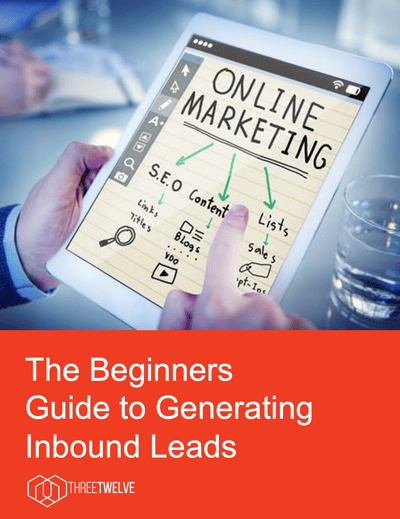As a marketing strategy agency we are sometimes brought in to help with naming a new product. It's an important task, because it can set the tone for the whole product lifecycle -- but it's also a very fun thing to work on. If you need a little help on how a naming process might work for your IoT, SaaS, or PaaS company, here are some things to keep in mind.
At ThreeTwelve we've helped launch new companies from scratch and we've helped existing companies launch new products. The process of naming a new company or product is part intuition -- that gut reaction that something's right or wrong -- and part backing it up with a story and some research so the name has grip, weight and meaning. Typically, we'll use a four-step process as we go about beginning the work of naming an IoT business or product:
- Start with the Story: What's the Background, Here?
- Brainstorm: What Do You Do?
- Brainstorm: What Do You Promise?
- Narrow Your List -- Then Walk Away
Sounds easy, right? It can be -- but it can also be enormously challenging. Here's more detail on each of these four steps as you go about the naming process.
Start with the Story

Every brand needs a story. Your story is the foundation that gives everyone inside and outside the company a clear picture of who the brand is and what it stands for. People increasingly expect the companies they interact with to have strong humanity. Use this knowledge to craft your brand story and begin to think of your brand as a living breathing being.
Some questions to ask to begin crafting your brand story:
- What role do you play in customers' or clients' lives?
- What is the underlying customer need or motivation that your product satisfies?
- What archetype does your product most closely fit?
- What promise to your customers do you keep?
- How do you want your customers to feel?
Answering these questions starts to breathe personality into your brand. Gut-check your ideas against this framework. The personality of the name should match the personality of your brand.
Once you are feeling good about your story, or at least are clear in its direction, here are two approaches to guide your name brainstorming.
Brainstorming - Random, Not Random

The most productive brainstorming happens when you give it a little structure. There is something to be said for being put into a box - creativity often flourishes under restraint.
Try starting with these two boxes. Fill them with words that answer two questions:
1. What do we do?
2. What do we promise?
To begin the brainstorming process, we get out big, easel-sized pieces of sticky paper (we prefer them for this use to white boards, because you can keep them and they don't erase accidentally). Designate one person as the note taker / moderator. They write down everyone's ideas -- without judgement -- but also try to keep the group creatively focused, often by asking questions that trigger new ideas.
Side note: To create a really vibrant brainstorming session you have to create a safe environment. Obviously if people feel mocked or judged, they will clam up. Keep it playful and light. Try rotating the role of the note taker. There is no hierarchy at the brainstorming table and the intern's ideas are as valued as the CEO's.
Let the Names Begin
Now begin answering the first question: What do we do?
Don't limit yourself too much here. Think of words that explicitly say what you do and then think of words that only capture the essence of what you do. Break out the thesaurus, combine existing words, make up new words. But don't vet your ideas just yet. Let them come freely. "Bad" ideas often trigger really good ones -- so no censorship.
Names that come out of this type of questioning can be really strong. Think: Facebook, Lyft, Shipt.
Promises, Promises
Once you've thought of every possible word or word combo that says what you do, it's time to move on to the next question: what do you promise?
Answering this question puts you in your customer's shoes. How do you want them to feel as a customer? What is the end result of becoming your customer? What's in it for them?
This kind of questioning is really powerful and can even help strengthen your existing brand story if you haven't answered these questions before. It really gets to the heart of why your product or company exists. It's good stuff, I promise.
Some great examples of names that capture the promise: DuoLingo, Spirit Airlines, Intel, Yum.
Begin the Gut Check
Now that you have these large lists of words and ideas, start evaluating. For this stage of the process, we rely on gut check. Circle the ideas that feel right, that resonate, that jump out at you even if you can't say exactly why.
And now walk away.

Go for a walk. Eat a meal. Sleep.
We, as a team, have taken long silent walks together (not an easy feat with this group) and come back to share our thoughts with newly cleared minds.
Then look at these ideas with fresh eyes. You might wonder what you were thinking the day before -- we call it a brainstorming hangover. You need some distance between the creation and the evaluation of ideas. It gives clarity.
With the ideas you still love, start vetting. This is an entirely different and involved process that we'll cover in a separate post but you certainly don't want to go too far down a path with a name you can't use.
Thinking inside the box is not always a bad thing
These are just two boxes you can put yourself into to start your name brainstorming. The point is that giving some structure to your brainstorming can actually help you be more creative; it's a non-random random process that often works because by removing the need to put brainpower into the structure of the process you're free to put that much more into generating the ideas required.
Have Questions?
We're happy to share these insights on how to name an IoT, SaaS, or PaaS company or product with you -- but if you're still struggling, you don't have to go it alone. If you think (or know!) that you need some help, get in touch with this handy form:
Interested in more great content on marketing your IoT, SaaS, or PaaS company? There's more great content below:
Need a Little Help with Lead Generation for your IoT, SaaS, PaaS, or Tech Company?
You may have heard it attributed to William S. Burroughs, or to Lou Holtz, or maybe to Tony Robbins:"If you're not growing, you're dying."
That might seem a little bleak, but think about it: All customers and clients churn eventually, and if you're not preemptively replacing them then -- that is, if you're not growing -- then eventually you'll be out of business.
Thus, lead generation is very likely the single most important activity in which your tech company's marketing department can engage. This free eBook will guide you through all of the essentials of lead generation. It's free, so go ahead and grab it -- and help take your tech company to the next level. You can get to the download page right here:




